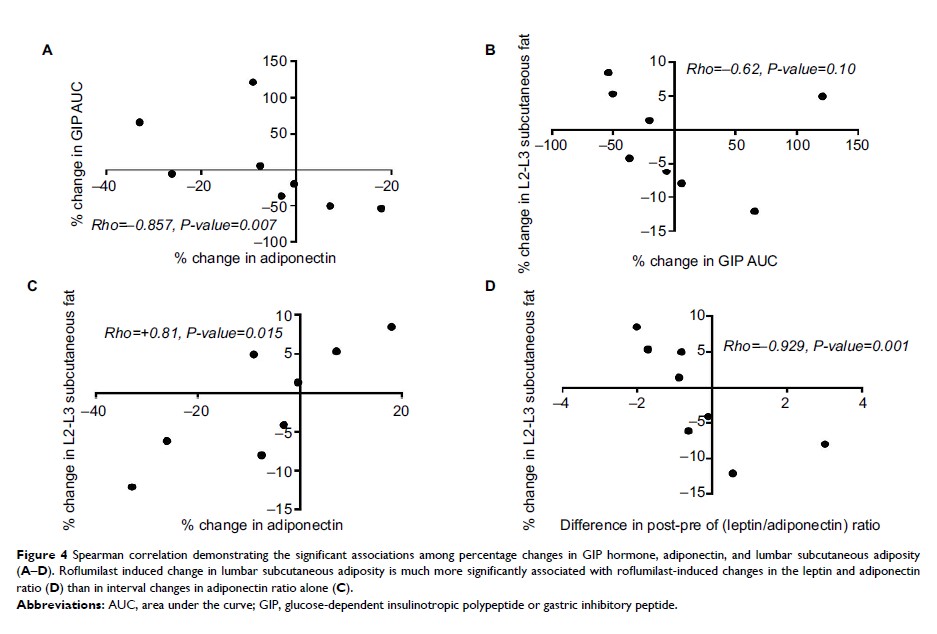9 0 5 7 8
论文已发表
注册即可获取德孚的最新动态
IF 收录期刊
- 2.6 Breast Cancer (Dove Med Press)
- 3.9 Clin Epidemiol
- 3.3 Cancer Manag Res
- 3.9 Infect Drug Resist
- 3.6 Clin Interv Aging
- 4.8 Drug Des Dev Ther
- 2.8 Int J Chronic Obstr
- 8.0 Int J Nanomed
- 2.3 Int J Women's Health
- 3.2 Neuropsych Dis Treat
- 4.0 OncoTargets Ther
- 2.2 Patient Prefer Adher
- 2.8 Ther Clin Risk Manag
- 2.7 J Pain Res
- 3.3 Diabet Metab Synd Ob
- 4.3 Psychol Res Behav Ma
- 3.4 Nat Sci Sleep
- 1.9 Pharmgenomics Pers Med
- 3.5 Risk Manag Healthc Policy
- 4.5 J Inflamm Res
- 2.3 Int J Gen Med
- 4.1 J Hepatocell Carcinoma
- 3.2 J Asthma Allergy
- 2.3 Clin Cosmet Investig Dermatol
- 3.3 J Multidiscip Healthc

Early effects of roflumilast on insulin sensitivity in adults with prediabetes and overweight/obesity involve age-associated fat mass loss – results of an exploratory study
Authors Muo IM, MacDonald SD, Madan R, Park SJ, Gharib AM, Martinez PE, Walter MF, Yang SB, Rodante JA, Courville AB, Walter PJ, Cai H, Glicksman M, Guerrieri GM, Ben-Dor RR, Ouwerkerk R, Mao S, Chung JH
Received 15 August 2018
Accepted for publication 17 December 2018
Published 27 May 2019 Volume 2019:12 Pages 743—759
DOI https://doi.org/10.2147/DMSO.S182953
Checked for plagiarism Yes
Review by Single-blind
Peer reviewers approved by Dr Colin Mak
Peer reviewer comments 2
Editor who approved publication: Professor Ming-Hui Zou
Purpose: Roflumilast (Daliresp, Daxas) is a FDA-approved
phosphodiesterase 4 (PDE4) inhibitor for the treatment of moderate-to-severe
chronic obstructive pulmonary disease. In mice and in limited human studies,
this oral medication can cause weight loss and improve insulin sensitivity. We
set out to determine the mechanism of its effect on insulin sensitivity.
Patients and methods: Eight adults with overweight/obesity and prediabetes received
roflumilast for 6 weeks. Before and after roflumilast, subjects underwent tests
of insulin sensitivity, mixed meal test, body composition, markers of
inflammation, and mitochondria function. Dietary intake and physical activity
were also assessed. Our primary outcome was the change in peripheral insulin
sensitivity, as assessed by the hyper-insulinemic euglycemic clamp.
Results: This
study was underpowered for the primary outcome. Pre- and post-roflumilast mean
peripheral insulin sensitivity were 48.7 and 70.0 mg/g fat free mass/minute,
respectively, (P -value=0.18),
respectively. Among the mixed meal variables, roflumilast altered glucagon-like
peptide 1 (GLP-1) hormone the most, although the average effect was not
statistically significant (P =0.18). Roflumilast induced a trend toward
significance in 1) decreased energy intake (from 11,095 KJ to 8,4555 KJ, P =0.07), 2)
decreased fat mass (from 34.53 to 32.97 kg, P =0.06), 3)
decreased total and LDL cholesterol (P =0.06 for both variables), and 4) increased plasma
free fatty acids (from 0.40 to 0.50 mEq/L, P =0.09) The
interval changes in adiposity and free fatty acid were significantly associated
with the subject’s age (P -value range=<0.001 to 0.02 for the correlations).
Inflammatory and adhesion markers, though unchanged, significantly
correlated with one another and with incretin hormones only after roflumilast.
Conclusion: We
demonstrate, for the first time in humans, increasing percentage of fat mass
loss from roflumilast with increasing age in adults with prediabetes and
overweight/obesity. We also demonstrate novel associations among
roflumilast-induced changes in incretin hormones, inflammatory markers,
peripheral insulin sensitivity, and adiposity. We conclude that roflumilast’s
early effects on insulin sensitivity is indirect and likely mediated through
roflumilast’s prioritization of lipid over glucose handling.
Clinical trials registration: NCT01862029.
Keywords: phosphodiesterase
4, obesity, diabetes, inflammation, incretins, aging
